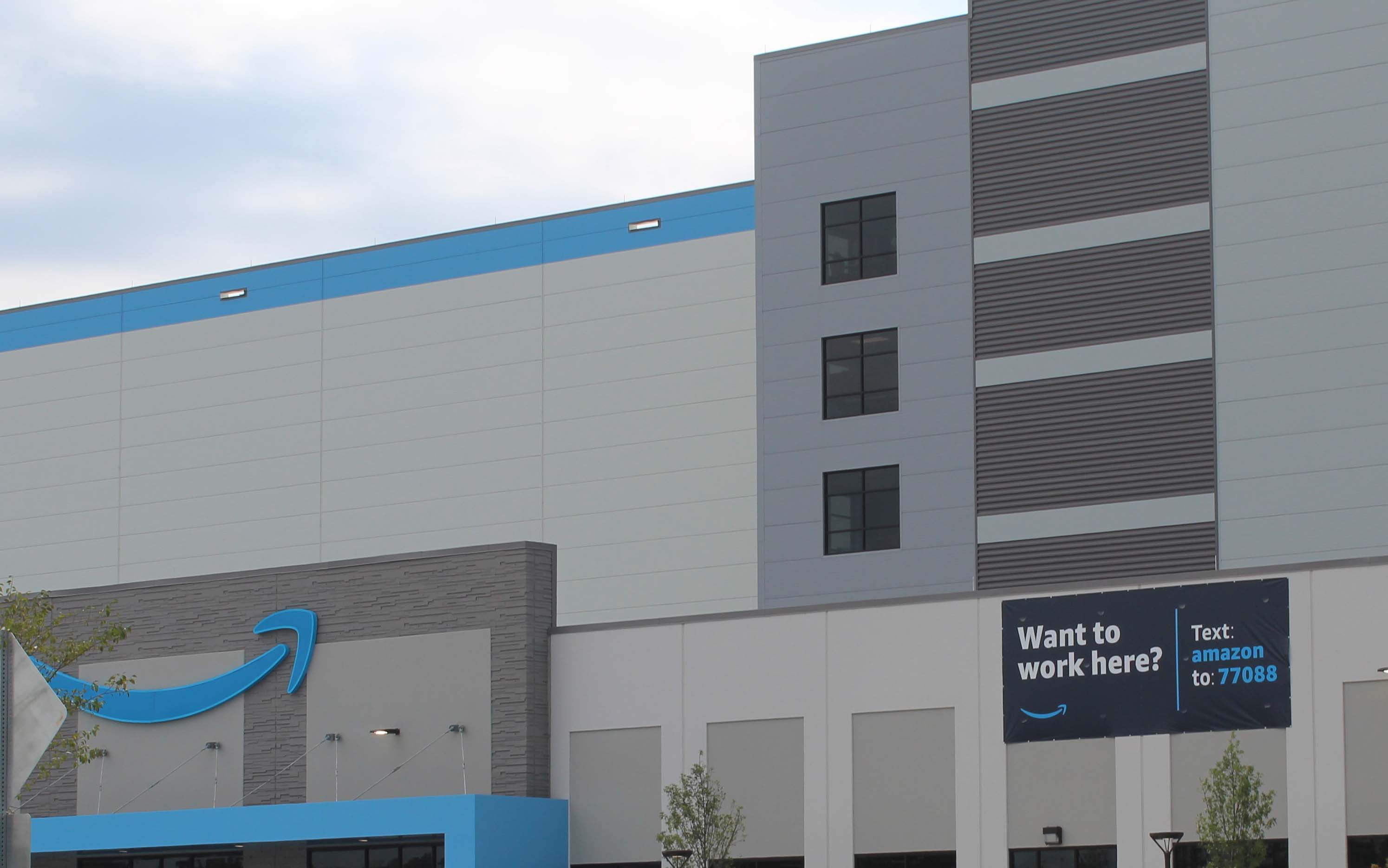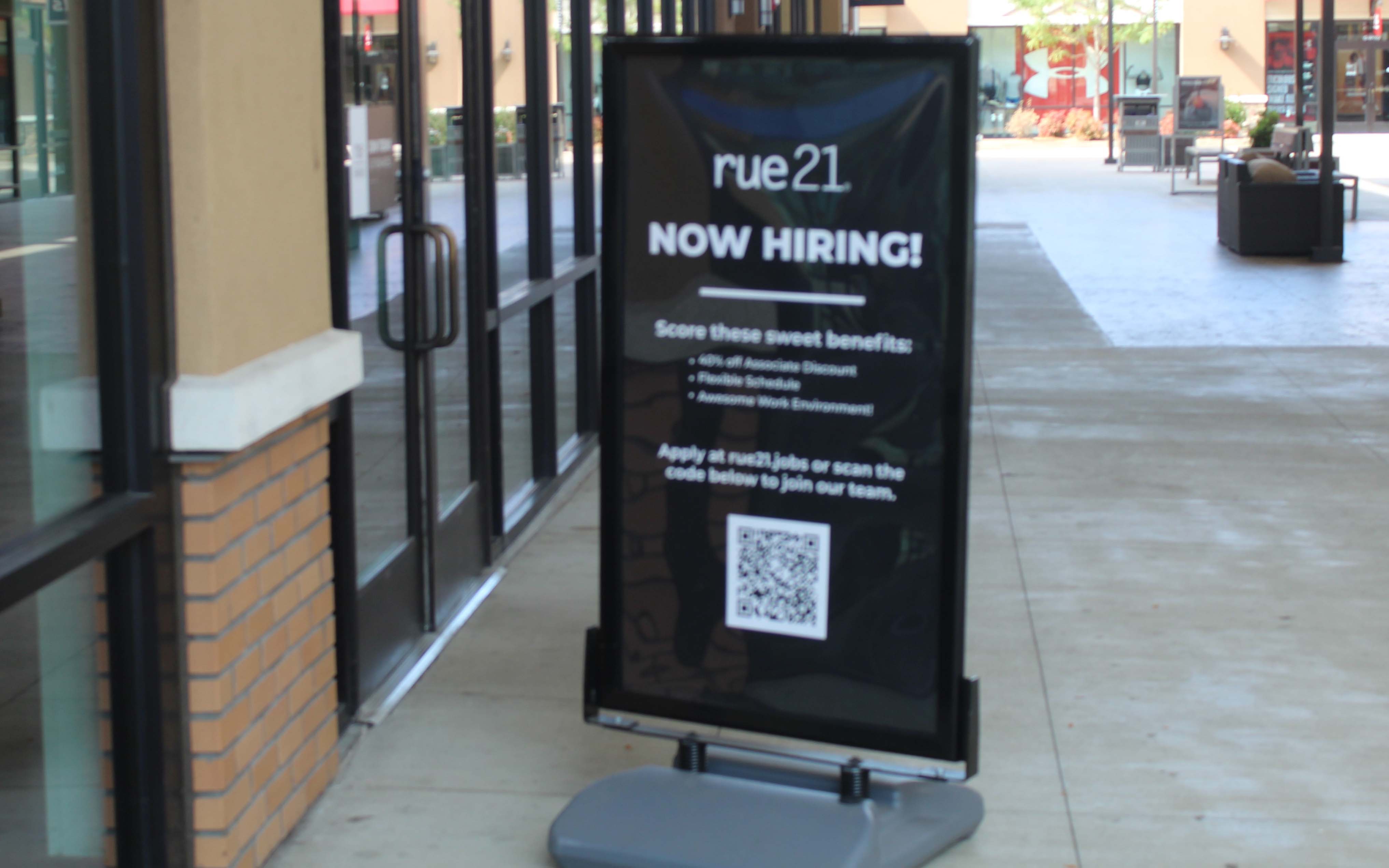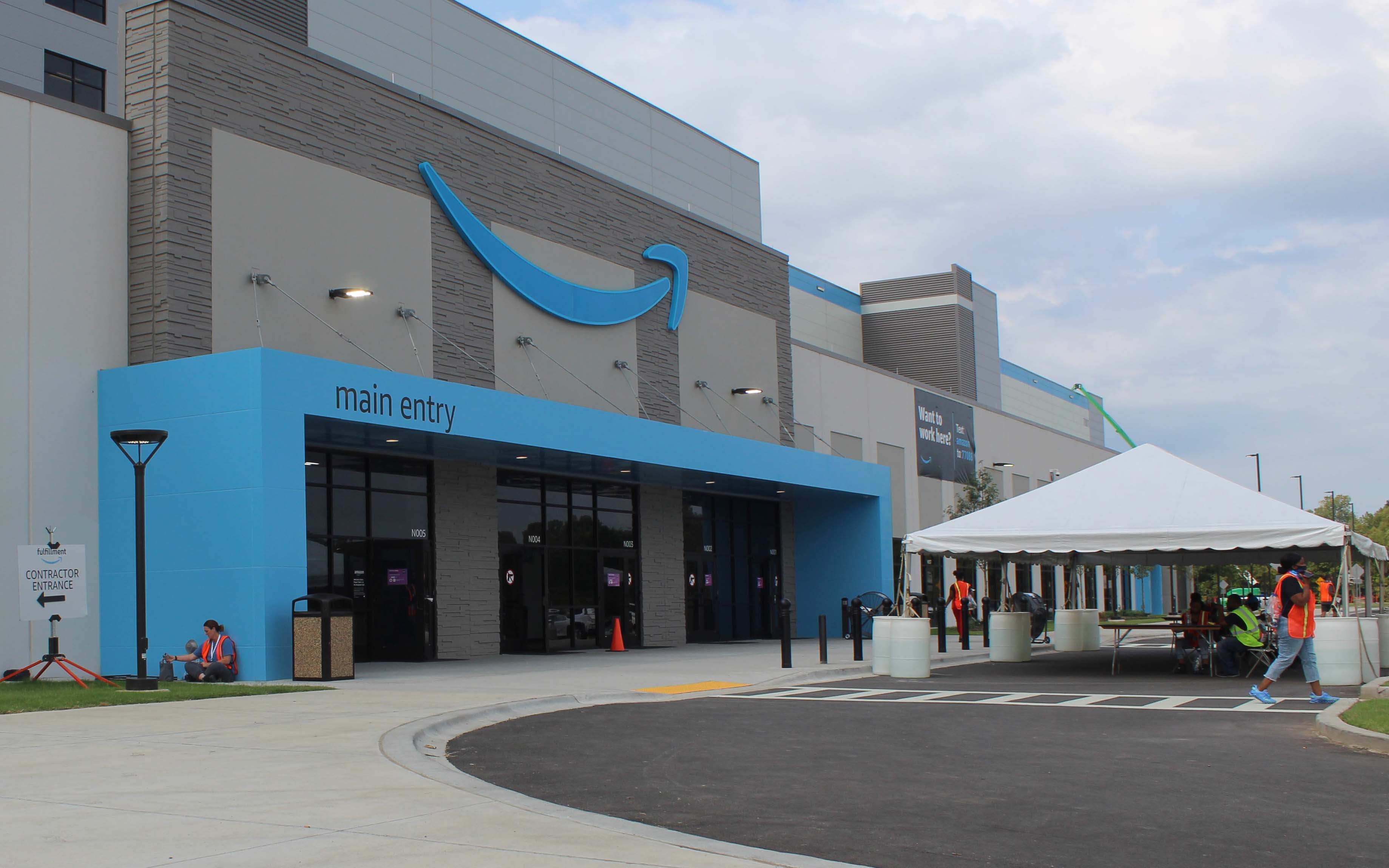Amid COVID-19 Delta variant surge, worker shortage threatens to stall Arkansas, U.S. economic growth
September 13-19, 2021
By Wesley Brown
In 2021, amid the ongoing COVID-19 global pandemic, Gov. Asa Hutchinson and his globe-trotting Department of Commerce Secretary Mike Preston have attracted nearly 2,000 new jobs to the state of Arkansas.
For example, Hytrol Conveyor Company Inc. on Sept. 2 announced the expansion of its product line in Fort Smith that will add 100 local jobs to the economy of the state’s second largest city. Hytrol expanded from Jonesboro into Fort Smith in early 2021 and had previously moved its parcel line to Northwest Arkansas with the promise of injecting 250 jobs into the local economy.
According to Chelsea O’ Kelley, spokeswoman for state Economic Development Commission, “Arkansas has signed new incentive agreements with 24 new or existing expanding companies to create 1,991 new jobs with an average wage of $20.57 in 2021.” “Those companies, O’Kelly said, “will invest more than $612 million into the state’s economy.”
Despite those gains amid the global COVID-19 pandemic, the state’s 1,355,630-worker job market this summer has stalled as employers are desperate to fill positions as the spread of the Delta variant threatens to impede momentum from earlier in the year. O’Kelley told The Daily Record that workforce shortages have been a concern for employers in every state, including Arkansas.
“According to various job sites, the number of job openings in Arkansas ranges from 30,000 to 79,000 including both full-time and part-time positions,” said O’Kelley. “Despite the challenges, many of the employers who have expanded or relocated to Arkansas this year have reported success in filling jobs, due to factors such as location, facility accommodations, or wage rates.”
O’Kelley also said AEDC, which is part of the state Department of Commerce, also works to implement a multi-pronged approach to meet workforce needs and connect members of the workforce to companies looking to hire. Examples include the AEDC’s Ready for Life, Future Fit, and the Center of Excellence initiatives, she said.
The Ready for Life program, launched in early 2021, is a collaboration between AEDC and the Department of Education that focuses on improving workforce skills for adult Arkansans outside of the K-12 and college learning environments. The Future Fit program was started as a pilot “skills gap” workforce program first launched in 2019 to place qualified individuals directly into well-paying jobs with participating companies after completing a public-private training program.
State Commerce Department officials also launched the new Centers of Excellence in March to designate high-achieving college workforce training programs that meet specific regional workforce needs in high-demand fields. Implemented through AEDC, the program was recommended by several two-year colleges throughout the state earlier this year to strengthen partnerships between colleges and industry.
While the success of those programs is still being measured during the 18-month long COVID-19 health crisis, U.S. and Arkansas job data shows that millions of workers that lost jobs at the beginning of the pandemic have not yet returned to the labor pool after all 50 states reopened their respective economies.
Through August, the ADP National Employment Report released on Sept. 1 showed that private sector employment increased by only 374,000 jobs from July to August. That is slightly better than the 326,000 private sector jobs added in July but well below the months of March, April, May and June when the average monthly job growth exceeded 585,000. For example, there were 881,000 private sector jobs added to the U.S. economy in May, the highest level since the pandemic began in March 2020.
“Our data, which represents all workers on a company’s payroll, has highlighted a downshift in the labor market recovery. We have seen a decline in new hires, following significant job growth from the first half of the year,” said Nela Richardson, ADP chief economist. “Despite the slowdown, job gains are approaching 4 million this year, yet still 7 million jobs short of pre-COVID-19 levels. Service providers continue to lead growth, although the Delta variant creates uncertainty for this sector. Job gains across company sizes grew in lockstep, with small businesses trailing a bit more than usual.”
Mark Zandi, chief economist of Moody’s Analytics, said the new ADP report shows that the U.S. job market cannot wrest itself from the grip of the pandemic. Moody’s, the Wall Street bond credit rating service, and the Roseland, N.J.-based ADP Research Institute produce the monthly private sector job report from actual ADP payroll data that measures the change in total nonfarm employment each month on a seasonally adjusted basis.
“The Delta variant of COVID-19 appears to have dented the job market recovery,” said Zandi. “Job growth remains strong, but well off the pace of recent months. Job growth remains inextricably tied to the path of the pandemic.”
The ADP report for August preceded the disappointing monthly U.S. job report on Sept. 3, which showed there were a dismal 235,000 new job gains as the nation’s jobless rate fell 0.2% to 5.2% with 8.4 million jobseekers still out of work. The August report followed up a strong gain of 943,000 jobs in July and a 0.5% decline in the U.S. unemployment rate to 5.4%.
The August data was well below the consensus of Wall Street economists who predicted that the U.S. job market would add an additional 730,000 new workers after gains of just under a million jobs in each of June and July.
Closer to home, Arkansas will not release its August job report until after the long Labor Day weekend on Sept. 17. In July, state labor force data produced by the U.S. Business Labor Statistics (BLS) and released on Aug. 20 by the Arkansas Division of Workforce Services (DWS) show Arkansas’ seasonally adjusted unemployment rate declined 0.1% to 4.3% in July. That follows three consecutive months where Arkansas’ unemployment rate stalled at 4.4%.
Despite the declining jobless rate, which is still well above the pre-pandemic level in February 2020 at 3.5%, Arkansas’ civilian labor force lost 2,542 workers, a result of 1,591 fewer employed and 951 fewer unemployed Arkansans. In highlighting one of the nation’s lowest jobless rates, Gov. Asa Hutchinson also noted the difficulty that Arkansas employers had in filling new jobs.
“Our unemployment rate continues to be significantly below the national rate, and the fact that unemployment is now down to 4.3% reflects a growing economy in the state. The job opportunities are abundant with virtually every employer in Arkansas needing more workers,” said Hutchinson. “The challenge is the number of Arkansans who have not returned to the labor force after they lost a job early in the pandemic. There is a constant need to increase the number of workers in order to keep our economy vibrant.”
Sylvester Smith, state director for the influential National Federal of Independent Business (NFIB), echoed Hutchinson’s concerns that employers, especially small business owners, are struggling to fill open positions and find qualified workers. In the NFIB’s monthly report released on Sept. 2, the Washington, D.C.-based trade group said 50% of all small business owners reported job openings they could not fill in August, an all-time high. The number of unfilled job openings has remained far above the 48-year historical average of 22%.
“The labor shortage and inconsistent supply chain are making things difficult for Arkansas’ small businesses, but owners are determined to get through this,” said Smith.
Meanwhile, Hutchinson has maintained his upbeat assessment of the state’s job market, despite evidence that employment growth has hit a wall. In May, Arkansas’ steady jobless rate caused Hutchinson to opt out of the federal supplemental unemployment assistance that offers state jobseekers an extra $300 per week during the COVID-19 pandemic for some 69,000 out-of-work Arkansans.
However, Pulaski County District Court Judge Herbert Wright in July granted a preliminary injunction to five plaintiffs represented by Arkansas Legal Services in a lawsuit against Hutchinson and DWS to end the federal program that extended unemployment benefits until Sept. 6 with a weekly supplemental payout of $300 on top of the state’s regular $400 benefit. The first $10,200 of unemployment benefits is tax-free for people with incomes less than $150,000.
Although Judge Wright’s ruling temporarily halted Hutchinson’s directive to end the extra unemployment pay on July 31, it did not rule on the question of whether the governor had the power to end the program. Instead, Wright agreed that the federal unemployment program is “clearly voluntary, and a state may decide whether to participate in them or not. This Court is faced with the question of who gets to determine whether to participate – the executive branch or the legislative.”
That court directive led Hutchinson to ask the GOP-led Senate and House supermajority to affirm his decision to order DWS Director Charisse Childers to terminate Arkansas’s participation in the federal unemployment program.
To comply with Hutchinson’s request, Sen. Jonathan Dismang, R-Beebe, introduced Senate Bill 1 on the second day of the special session in early August to repeal Act 1002 to ban mask mandates in Arkansas. That measure was easily approved by the Republican supermajorities in the Arkansas House and Senate and signed into law by Hutchinson on Aug. 6.
And despite Hutchinson’s urging for workers to return to the state’s shrinking labor pool, which includes 1,296,670 employed and 58,960 out-of-work unemployed workers actively seeking part- or full-time work, employers across the state are still hanging out “help wanted” signs and deploying untraditional means to find dependable workers.
At the Little Rock Port Authority, home to one of Arkansas’ largest industrial parks, Amazon began offering $1,000 bonuses earlier this summer in its effort to attract workers to the mammoth fulfillment center. Today, new employees are now working alongside automated robots to pick, pack and ship small items to customers anywhere.
Seattle-based Amazon first announced in July 2020 that it was planning to build a new 825,000 square-foot fulfillment facility that would create over 1,000 new full-time jobs with starting pay at an average of $15 per hour with full benefits. Amazon later followed up those job plans in December 2020 with another announcement that the online retail conglomerate plans to open a second, smaller fulfillment center in North Little Rock.
That Amazon facility, which is anticipated to launch later this year, will create over 500 new, full-time jobs that offer full-time employees comprehensive benefits including full medical, vision, and dental insurance as well as a 401(k) with 50% match starting on day one.
“Amazon is grateful for the continued support we’ve received from local and state leaders, and we look forward to leveraging our scale for good to support this great community,” said Alicia Boler Davis, Amazon’s vice president of global customer fulfillment.
Across the globe, Amazon has more than 175 operating fulfillment centers with more than 150 million square feet of space to complete millions of online orders. Sortable centers, such as the one planned for the Port of Little Rock, are usually more than 800,000 square feet and employ up to 1,500 workers.
As Amazon works to fill those jobs in Arkansas, the online conglomerate that is nearing $500 billion in annual revenue has pledged to invest over $700 million to provide upskilling training for 100,000 U.S. employees for in-demand jobs. On Sept. 15, Amazon is sponsoring its annual “career day” with plans to hire more than 40,000 corporate and tech roles in over 220 locations across the U.S., including Arkansas.
Considering new positions being added to the state’s economy, job data and anecdotal “now hiring” signs statewide highlight the struggles employers, HR managers, and employment agencies are facing to grow payrolls. For example, the Creighton University Mid-America Business Conditions Index, a leading economic indicator for the nine-state region stretching from Minnesota to Arkansas, reported on Sept. 1 that hiring managers are reporting supply chain bottlenecks and labor woes represent the greatest challenge for economic growth over the next 12 months.
“(Our) monthly survey results indicate the region is adding manufacturing business activity at a healthy pace, and that regional growth will remain positive, but somewhat slower. Supply chain bottlenecks and labor shortages remain obstacles to growth,” said Creighton University economist Ernie Goss, director of the school’s Economic Forecasting Group.
“Even with strong manufacturing job growth, the region has yet to recover all job losses from the pandemic. The latest U.S. Bureau of Labor Statistics data indicate that current regional nonfarm employment is down by 431,000 jobs, or 3.3%, compared to pre-COVID-19 levels,” added Goss.
In Arkansas, Goss said although durable goods factories are adding jobs and hours worked, the state’s overall “business conditions” index in August declined in August. The next snapshot to get a better view of what direction the Arkansas job market is going will take place on Sept. 17 when DWS will release the state’s August unemployment report.
PHOTO CAPTONS: (Photos by The Daily Records staff)
Now Hiring: Arkansas employers desperate to fill jobs amid U.S. workers shortage --- Despite a declining jobless rate of 4.3% through July, the end of federal $300 per week unemployment benefits, and employers clamoring for new employees, thousands are Arkansas workers who lost jobs during the pandemic and remain on the sidelines, state workforce data shows. Arkansas job market shranked in July as thousands of Arkansans who lost a job early in the pandemic have not returned to the labor force. Arkansas jobless rate now stands at 4.3% compared to 3.5% when the pandemic began in March 2020.





